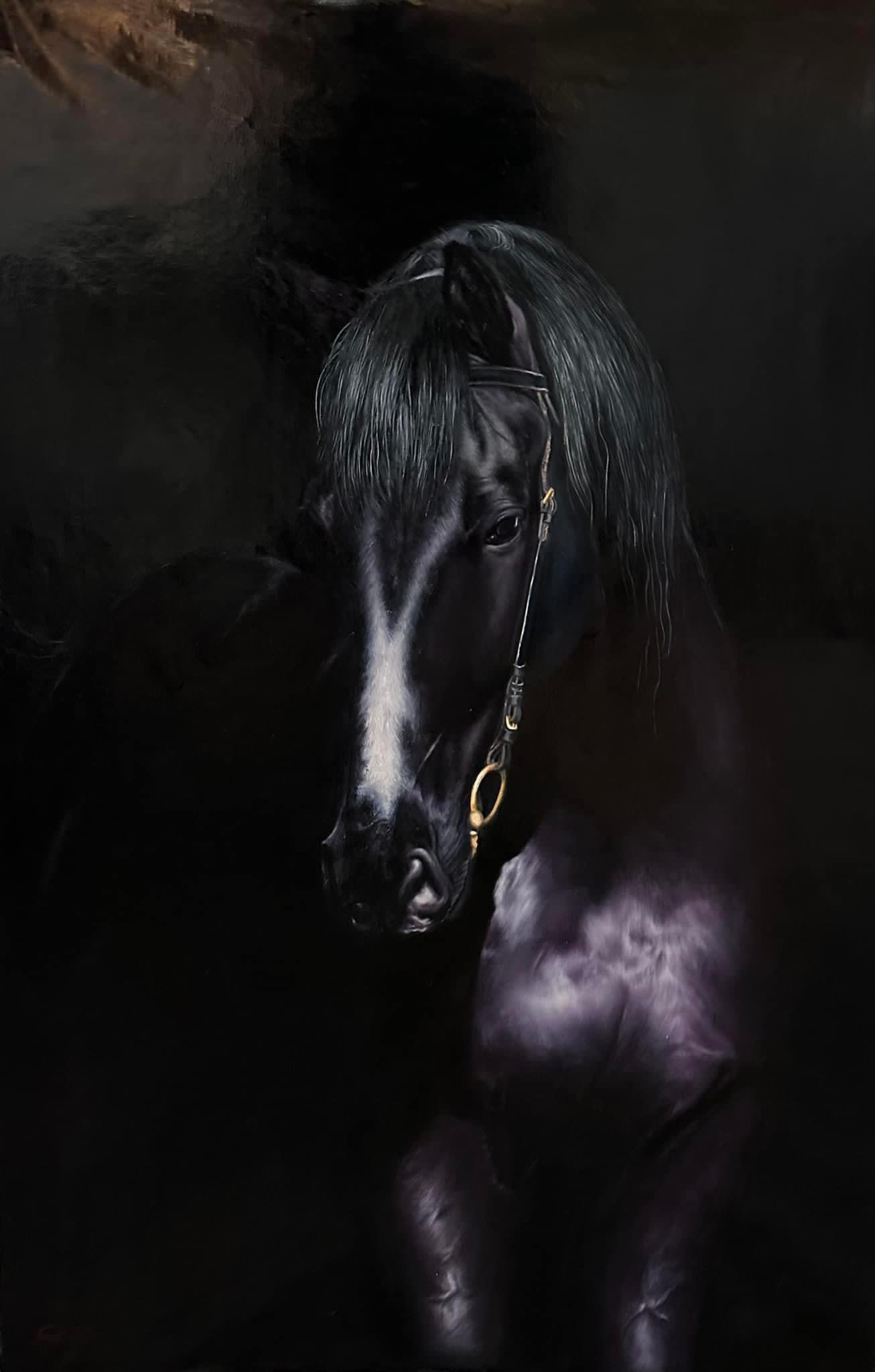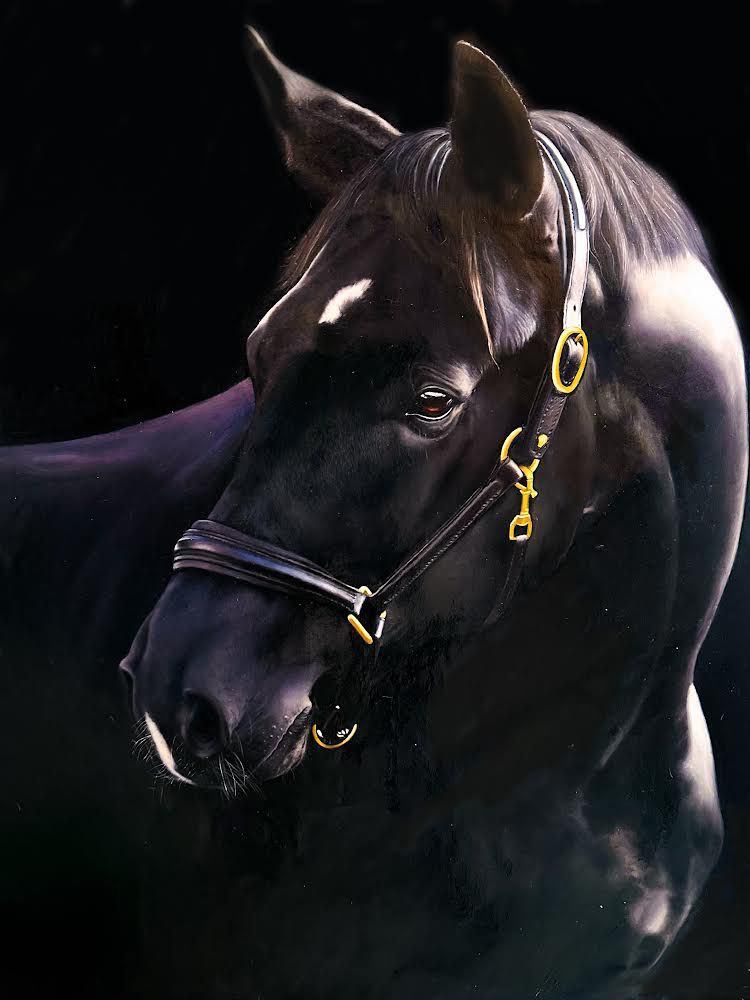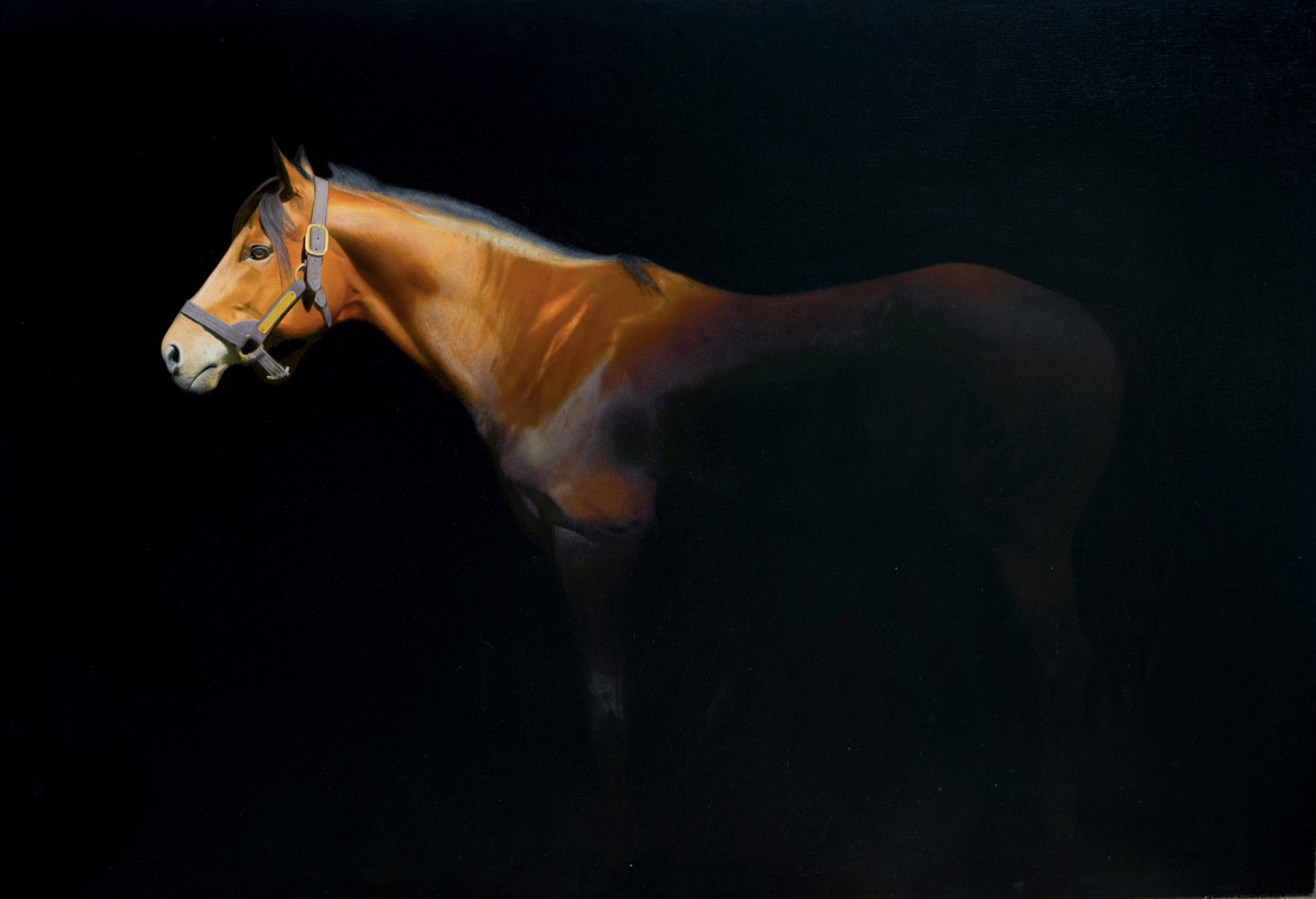2025
Marco Bertoli
Modena
Marco Bertoli, art advisor and international art expert, introduces Michi Grassi. Always attentive to the promotion of young talent, Marco Bertoli recognizes in Michi Grassi solid technical expertise, originality, and expressive power—qualities that place the artist in the great figurative tradition. Specializing in hyperrealistic portraits, particularly of horses, the artist captures the essence, moods, and character of the animal, establishing an authentic and intense relationship with it.
Today considered an outstanding figure in equestrian painting, Michi Grassi — born in Taranto in 1988 — grew up in a family of artists and art lovers, discovering his sensitivity and vocation for painting at the age of 27.
While studying law, he happened to visit the Roman church of Santa Maria del Popolo, where he was indelibly struck by Caravaggio’s extraordinary altarpiece in the Cerasi Chapel, The Conversion of Saint Paul.
In this work, the presence of the horse—its form exalted by Caravaggio’s masterful use of chiaroscuro—dominates the scene, and the animal rises toward the divine, imparting a powerful energy to the painting itself.
Michi thus embarks on his artistic journey, striving to recreate on canvas the profound inspiration awakened by that vision. He begins painting under the guidance of international masters, diligently and persistently refining the fundamentals of freehand drawing. He continues his studies with a focus on figurative art, working in graphite under the mentorship of talented instructors from the Academy of Fine Arts in Rome.
After perfecting his painting technique and pursuing, with almost obsessive dedication, the naturalistic depiction of his favorite subject—the horse—he is invited to participate in his first exhibition at the event “I Cento Pittori di Via Margutta” in 2017.
Following this first experience, he chose to immerse himself in an environment more closely aligned with his nature and passion for horses. Warmly welcomed into the cultural and sporting world, his journey since then has been marked by awards and enriching encounters with art historians, distinguished politicians, entrepreneurs, kings and princes of Arab royal families, and other prominent figures who have admired and acquired his works for their collections.
Like distant echoes of images and forms steeped in emotion, Michi’s paintings evoke harmonies rooted in ancient culture, enriched with narrative, sculptural, and figurative qualities that are often associated with the Baroque style.
The term Contemporary Neobaroque was coined in 1987 by Omar Calabrese, although renowned scholars such as Gillo Dorfles and Umberto Eco have also written extensively on the subject.
This neologism identifies not merely a particular attitude, but a distinct formal quality—almost a category of the artistic spirit—whose roots lie in the latter half of the nineteenth century and which resurfaces within the collective unconscious of the twentieth century.
In this century, the artistic Neobaroque spreads as a mirror of a society dominated by contrasts and oppositions—marked by spiritual restlessness poised between extravagant decadence and the allure of grotesque splendor. It favors a Dionysian, dynamic movement as a dramatic expression of the intoxication of becoming—an impassioned interplay of light and shadow born from an altered perception of reality.
Within this atmosphere, Michi’s work finds its place—imbued with an artistic language rare in its refinement and majestic grace. His style adheres to that timeless Neobaroque aesthetic, capable of capturing the sensibilities of today’s society, increasingly drawn to a renewed appreciation of the Baroque spirit within contemporary art.
Eugenia Battisti
Art historian



